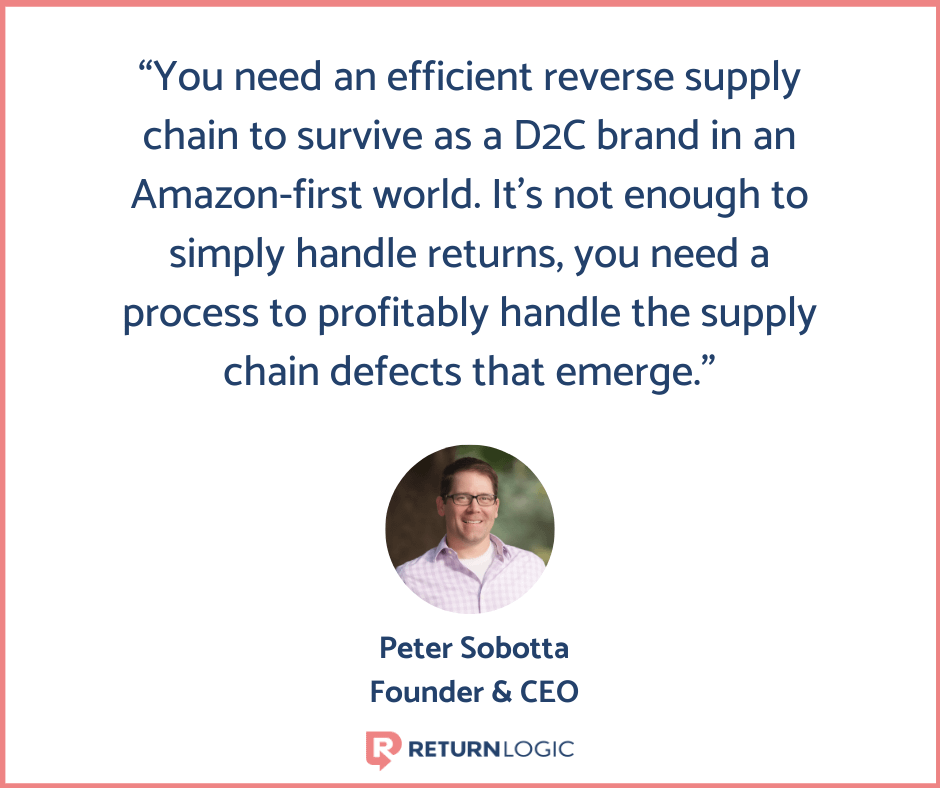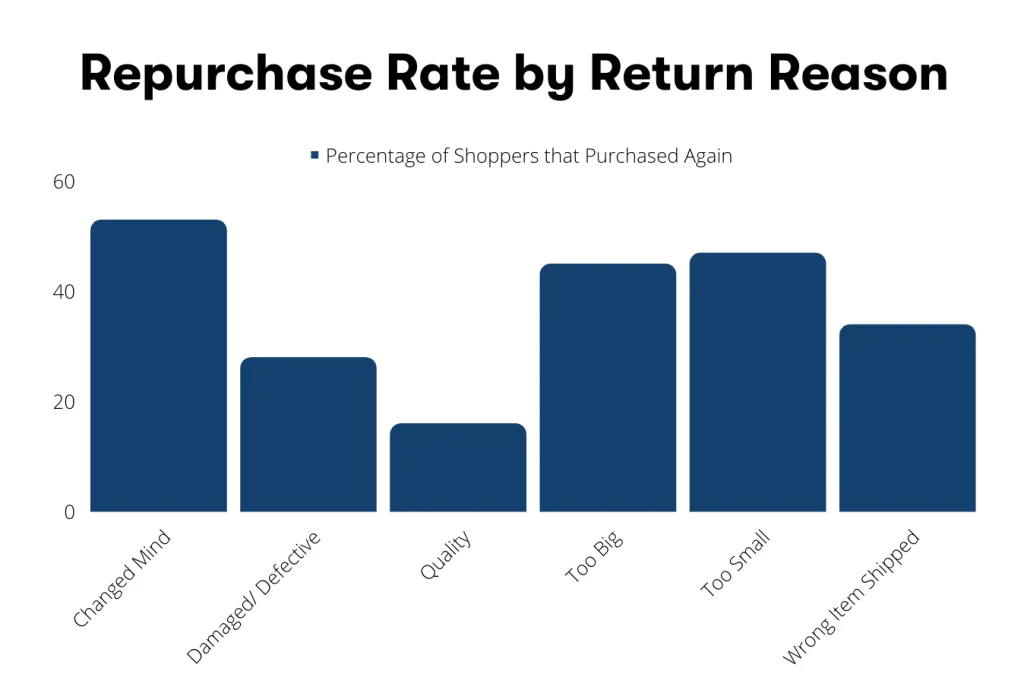Automated Returns: Why it’s Critical for Growing Ecommerce Retailers

Consumers’ buying habits have changed. They don’t care about the same things they used to when it comes to making a purchase.
With online shopping becoming more and more popular, returns are now an expectation for shoppers rather than only serving as a solution for a bad purchase.
In fact, 41% of customers have adopted a new habit of over-buying at the point of purchase with the intention of returning some products. This can sometimes be known as bracketing.
Ecommerce retailers without an efficient returns management system can expect to fall behind in today’s changing market as returns have become a more essential part of running a successful retail business.
In 2022, still relying on a manual process to keep track of returns wastes dozens of hours every week on a system that can easily be automated.
In this article, we’ll look at the difference between manual and automated returns management systems and show you why automated returns are a necessity to stay competitive.
Defining Returns Management
So, what even is a returns management system?
A returns management system is all the policies, rules, workflows, and processes that build a return for a shopper, and the systems used by the retailer to receive, grade, and complete the return.
So, it’s a pretty complicated part of ecommerce retail.
Keeping track of back-and-forth communications with each customer, alerting every team on the status of each return, and manually inputting records and data points into spreadsheets quickly turns into a nightmare that’s bound to be filled with human error.
Having a system that makes it easy for things to slip through the cracks can lead to frustrated customers which can be the worst thing for a brand’s reputation. With 13% of negative customer experiences shared with 15 or more people, it’s best to keep the negative encounters at a minimum.

Returns management shouldn’t be confused with reverse logistics. Reverse logistics is all about efficiently handling returned products and recovering their maximum value. This process includes restocking products back into inventory, selling them through an off-price channel, liquidating, or recycling them.
While the two are very different, returns management feeds into reverse logistics; they must work together for either to have an optimized solution.
The two pieces relay information back and forth, and both depend on the operational processes that a retailer has in place.
With a clear understanding of what returns management is, it’s easier to see what the problems with a manual returns process are.
Problems with a Manual Returns Management System

1) Waste of Time: Possibly the biggest and most obvious problem with manually processing your returns is the amount of time that is wasted on keeping track of returns. Automatically capturing data reduces human error in inputs and frees up the customer service team to deal with more pressing matters.
2) Unnecessary Friction with Customers: Nobody likes giving or receiving bad news. Enforcing returns policies may require telling customers things they don’t want to hear, like if their purchase is ineligible for a return. Automated returns provide fluid communication with customers that help make them feel supported in their returns journey.
3) Lack of Internal Communication: Successfully processing a return takes the collaboration of many different teams within the company. Keeping track of records through spreadsheets and emails makes it hard to communicate between teams about what’s going on with each return. This lack of communication is often a major reason for long returns processing times that result in unsatisfied customers.
4) Lack of Scalability: Manual processing can be manageable if there aren’t many returns coming in. However, as a merchant grows, growth in returns should be a natural expectation. Keeping up with manually processing returns would be impossible without also increasing the time and labor needed to be put in, making a manual returns management system unscalable.
5) No Customer Centricity Balance: It’s hard to keep customers coming back if you can’t meet their expectations. Having a manual returns management system makes it harder to keep promises to customers. Automating returns keep the customer experience in mind, so less of them churn due to poorly met expectations.
Another major problem with manually processing returns is that it forces retailers to separate managing warranty requests from returns requests, which is highly inefficient.
Manual Warranty Workflow
A commonly overlooked problem with manual returns processing is that it forces retailers to also process their warranty requests manually.
While warranties work similarly to other return types, they’re often managed apart from returns, causing the retailer to form a completely separate (and costly) manual processing system for warranty requests.
When automating the returns process, retailers that also offer warranties can find a solution that also automates warranty requests under the same system.
Not only does this cut the time and labor needed to process one simple request, but it provides a seamless experience for customers across return types. The user interface will look the same whether they want to request a warranty or an exchange.
There’s a lot to learn about how warranties work with returns, but clearly put, automating returns will also simplify a retailer’s warranty solution significantly.

Automated Returns Boost Profits
Manual processing has given returns the frustrating and complicated rep that it currently has. Automation turns this costly part of the business into a profit center.
Automated returns makes managing returns easier and allows retailers to drastically improve their return process.
Not only do retailers save money on reduced time and labor needed to manage returns, but automation also helps to reduce return rates and increase customer lifetime value.
How? Through the use of returns data.
Returns data holds a great deal of insight that can be used to provide the best products and experience for your customers.
Returns data, like the example below, can help predict the impact of different return reasons on the customer relationship and informs the likelihood of a future purchase.
These insights can be used to prioritize certain shoppers, determine marketing strategies, and improve product quality to reduce future return rates.
Ultimately, returns data collected through an automated process can:
- Stabilize the customer relationship
- Drive future engagement
- Counteract customer churn
Turning returns into a profit center through automation starts with choosing the right returns management software.
What is Ecommerce Returns Software
Now that the benefits of automated returns management are clear, it’s time to learn how exactly to go about automating returns.
This is done by using returns software.
Returns software is any tool that enhances the returns process for retailers and their customers. The software automates parts of the returns process to limit how much of it is done manually.
Returns software can typically be categorized as either a returns app or a returns solution:
Returns App: Returns apps are primarily focused on improving the user interface and reducing returns-oriented communications with customer service. It’s a quick fix to a small subset of problems associated with returns.
Returns Solution: Returns solutions provide a self-service returns portal and functions to monitor, process, and optimize returns. Returns solutions strive to address more serious business challenges in returns.
Now, there are a couple different kinds of returns software as well – operational and post-purchase.
Operational return software: Improve operational efficiency, minimize short-term costs, and leverage analytics to maximize long-term profitability.
ReturnLogic is an example of an operationally focused returns solution.
Post-Purchase Return Software: Place greater emphasis on the return portal and less on the back-end operations of returns. These solutions are more focused on the customer experience.
All solutions are valid approaches to returns management. The important thing is to pinpoint where the most time and money is being lost in the current returns management system and work to optimize those parts through automation.
Conclusion
To stay competitive in 2022, ecommerce merchants must optimize their returns management solutions to provide the best experience to their customers.
Manual returns processing is an outdated method that costs too much time and money to process each individual return.
By automating this process, retailers gain more control over their returns management and are able to collect data that can ultimately improve their customer lifetime value.
Returns management is complex. It may take time for a merchant to fully optimize the process. However, the first step in getting started is to understand where things are going wrong in the current system.
To learn more about optimizing your returns solution, check out our full playlist on YouTube.




